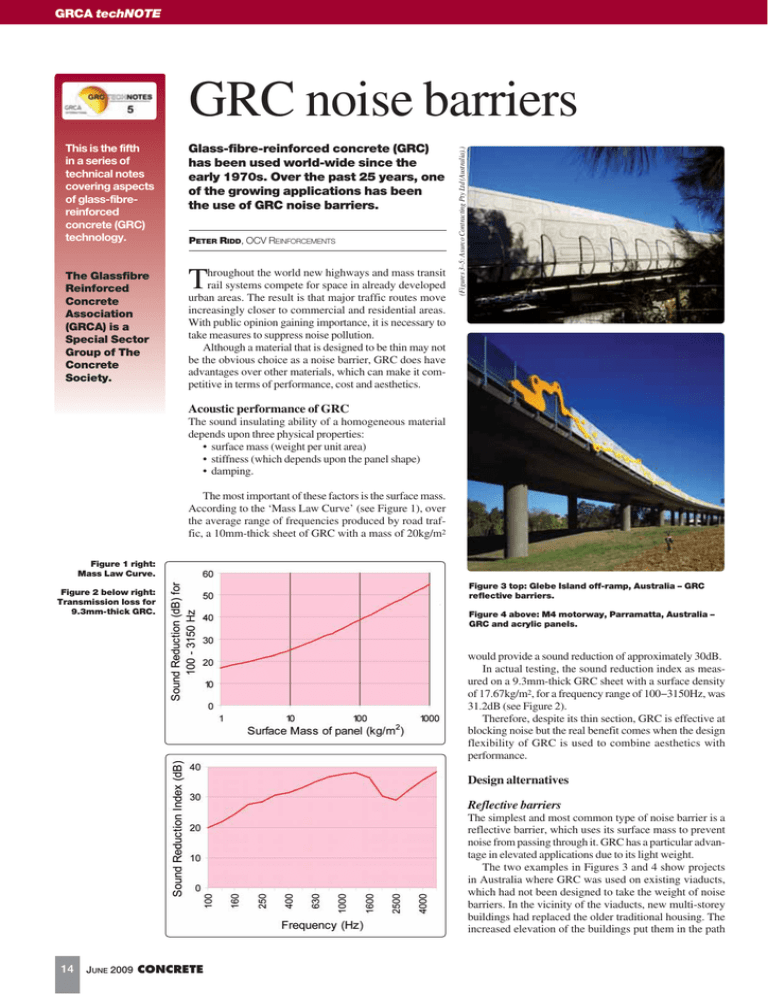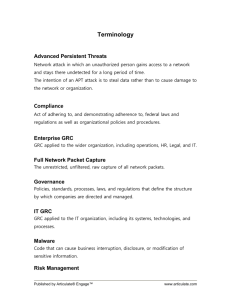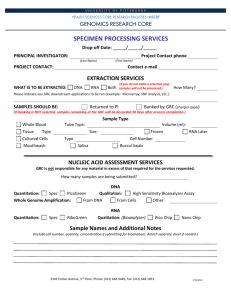GRC noise barriers
advertisement

GRCA techNOTE This is the fifth in a series of technical notes covering aspects of glass-fibrereinforced concrete (GRC) technology. Glass-fibre-reinforced concrete (GRC) has been used world-wide since the early 1970s. Over the past 25 years, one of the growing applications has been the use of GRC noise barriers. The Glassfibre Reinforced Concrete Association (GRCA) is a Special Sector Group of The Concrete Society. T PETER RIDD, OCV REINFORCEMENTS hroughout the world new highways and mass transit rail systems compete for space in already developed urban areas. The result is that major traffic routes move increasingly closer to commercial and residential areas. With public opinion gaining importance, it is necessary to take measures to suppress noise pollution. Although a material that is designed to be thin may not be the obvious choice as a noise barrier, GRC does have advantages over other materials, which can make it competitive in terms of performance, cost and aesthetics. (Figures 3–5: Asurco Contracting Pty Ltd (Australia).) GRC noise barriers Acoustic performance of GRC The sound insulating ability of a homogeneous material depends upon three physical properties: • surface mass (weight per unit area) • stiffness (which depends upon the panel shape) • damping. The most important of these factors is the surface mass. According to the ‘Mass Law Curve’ (see Figure 1), over the average range of frequencies produced by road traffic, a 10mm-thick sheet of GRC with a mass of 20kg/m2 Figure 1 right: Mass Law Curve. Figure 2 below right: Transmission loss for 9.3mm-thick GRC. Figure 3 top: Glebe Island off-ramp, Australia – GRC reflective barriers. Figure 4 above: M4 motorway, Parramatta, Australia – GRC and acrylic panels. would provide a sound reduction of approximately 30dB. In actual testing, the sound reduction index as measured on a 9.3mm-thick GRC sheet with a surface density of 17.67kg/m2, for a frequency range of 100−3150Hz, was 31.2dB (see Figure 2). Therefore, despite its thin section, GRC is effective at blocking noise but the real benefit comes when the design flexibility of GRC is used to combine aesthetics with performance. Design alternatives Reflective barriers The simplest and most common type of noise barrier is a reflective barrier, which uses its surface mass to prevent noise from passing through it. GRC has a particular advantage in elevated applications due to its light weight. The two examples in Figures 3 and 4 show projects in Australia where GRC was used on existing viaducts, which had not been designed to take the weight of noise barriers. In the vicinity of the viaducts, new multi-storey buildings had replaced the older traditional housing. The increased elevation of the buildings put them in the path 14 JUNE 2009 CONCRETE GRCA techNOTE of noise from the viaducts and hence noise barriers were required. In both applications, GRC was used in combination with other materials to give a more aesthetic result. However, reflective barriers do not exploit the full performance benefits of GRC. If tall buildings are present, the use of reflective noise barriers can actually increase the noise level at elevated floors, as the sound will be reflected back from the noise barriers on the opposite side of the road. It is possible to reduce the problem of reflected noise by using the design flexibility of GRC and creating a barrier with a profiled face, which will disperse the noise. In this case the reflecting face may be angled to break up the noise by reflecting it upwards and along the road, and not back at the buildings opposite. GRC grill to produce a traditional Islamic pattern, while still retaining the acoustic performance of the panel (see Figure 5). The key to the performance of the Australian absorption panel is its construction. A GRC grill with approximately 50% voids on the face exposed to the traffic allows sound to pass into the panel. Within the panel an insulating material dissipates the acoustic energy of the sound waves without causing significant reflection. The back face of the GRC panel then helps to stop any remaining sound from escaping. In actual testing by the Acoustic Laboratories of CSIRO in Australia, over the frequency range 100−3150Hz, the noise reduction coefficient (NRC) was found to be 0.95, and the sound transmission class was 34dB. For a panel weighing less than 70kg/m2 this outperforms many other noise barrier systems currently available (see Figures 7 and 8). Absorption barriers Concluding remarks The ultimate in GRC noise barriers is the absorption barrier. This effectively blocks the transmission of noise through the panel and also reflects very little noise back at the road. The design that has been most widely used is one that was developed in Australia in the 1980s by Rocla Composites and the Victoria Roads Authority. Panels with this design have been produced for contracts in Australia, Thailand and Malaysia. In Malaysia, the manufacturer took the novel approach of adapting the design of the GRC is generally considered as a lightweight material due to its thin section. However, despite this it has a high surface mass, which makes it very efficient at blocking the passage of noise. With no embedded steel reinforcement GRC is unaffected by de-icing salts. Therefore combining these benefits with its design flexibility makes it an ideal material for use in noise barrier construction, particularly on elevated structures. With highway construction placing greater importance on aesthetics its use in this application ■ is growing. Dispersive barriers Figure 5 above left: GRC absorption panels, Malaysia. Figure 6 above right: GRC absorption panels, Australia. Figure 7 below left: Noise reduction coefficient for GRC absorption panels. Figure 8 below right: Sound transmission class (STC) for absorption panels is 34dB. CONCRETE JUNE 2009 15

